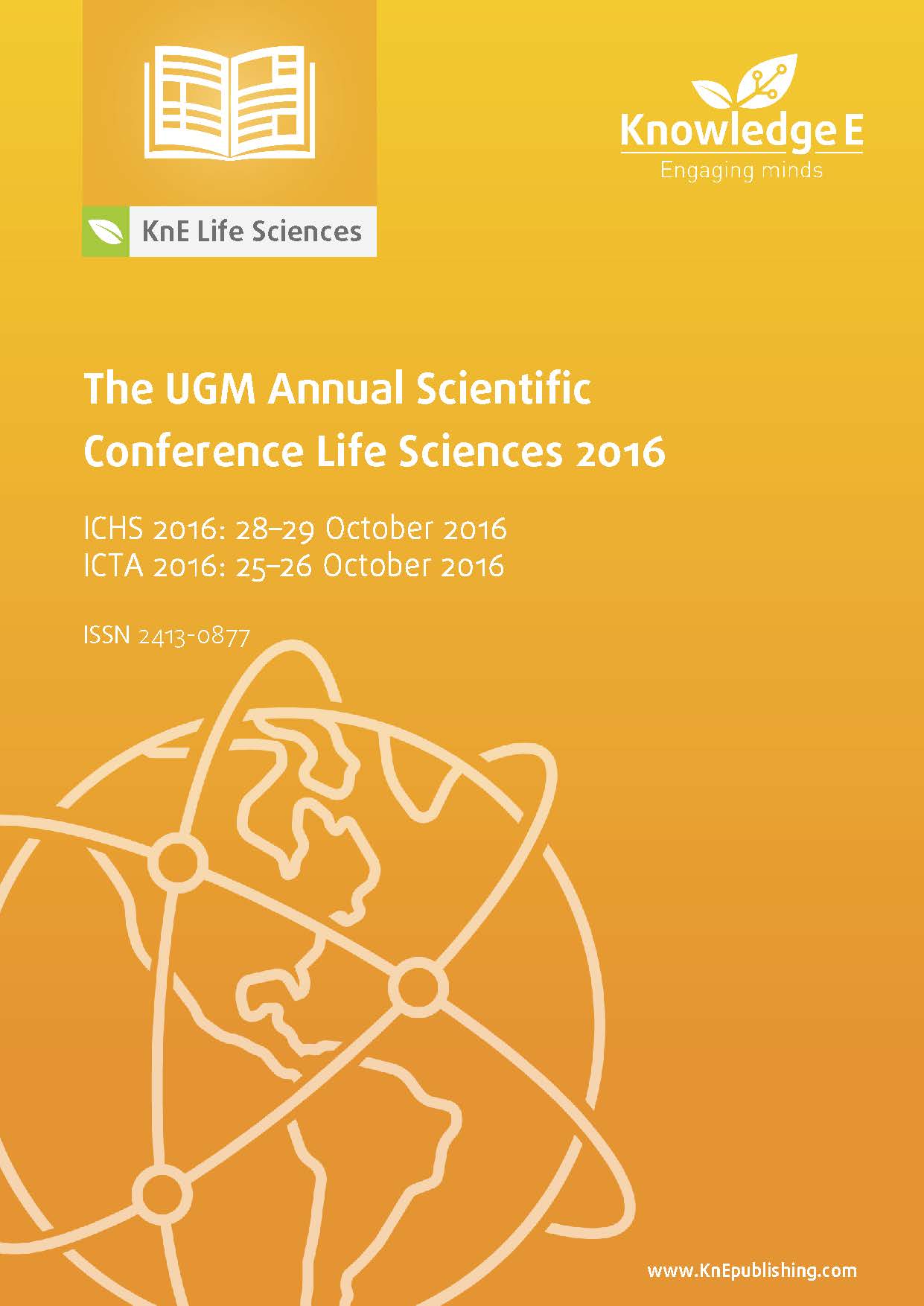Differences in the Rearing System Toward Bali Cattle Gastrointestinal Helminths Infestation in Prafi District, Manokwari Regency, West Papua Province, Indonesia
DOI:
https://doi.org/10.18502/kls.v4i11.3872Abstract
Helminthic disease is a disease that attacks cattle at various ages. The cattlerearing influence the development of parasitic disease agents. The objective of this study was carried out to determine the extent to which level of parasites infestation towards different cattle rearing system through examination of cattle feces. Coprological techniques, simple flotation, and simple sedimentation were used to detect gastrointestinal helminths in Bali cattle. A total of 369 rectal fecal samples were collected from Bali cattle on semi-intensively reared, and non-intensively reared in Prafi District, Manokwari Regency, West Papua Province, Indonesia. Fecal samples were used for qualitative and quantitative coprological examination. Eggs worms were identified based on morphology. Meanwhile, the relationship between rearing system to the prevalence of helminthic diseases was analyzed by Chi-square test. Descriptive analyses results showed that the overall prevalence was 57.45 % of gastrointestinal (GI) helminths and the prevalent helminthes eggs identified were Strongyle (22.22 %),
Strongyloides (0.81 %), Fasciola (34.96 %), Paramphistomum (10.03 %), Toxocara (5.96 %), Trichuris (2.44 %), and Moniezia (0.81 %). The result showed that there was no association (P < 0.05) between rearing system and the prevalence of gastrointestinal helminth infestation.
Keywords: Bali cattle, Gastrointestinal helminths, Manokwari Regency, Prevalence, Rearing system
References
World Bank. Livestock development report. World Bank, Washington DC USA. 2001; 50–53. http://documents.worldbank.org/curated/en/306051468740146162/ Livestock-development-implications-for-rural-poverty-the-environment-and-globalfood-security
Wahyono DE, Hardianto R. Pemanfaatan sumber daya pakan lokal untuk pengembangan usaha sapi potong. [Utilization of local resources for the development of beef cattle busines]. Lokakarya Nasional Sapi Potong 2004. Pusat Penelitian dan Pengembangan Peternakan, Bogor. 2004; p. 66–76. [in Bahasa Indonesia,http://peternakan.litbang.pertanian.go.id/fullteks/lokakarya/lopo04-12.pdf
Bugiwati SRA. Pertumbuhan dimensi tubuh pedet jantan sapi Bali di kabupaten Bone dan Barru Sulawesi Selatan. [Body dimension growth of calf bull in Bone and Baru district, South Sulawesi]. J Sains Tek, 2007;7:103–108. http://repository.unhas.ac.id/ handle/123456789/4376 [in Bahasa Indonesia]
Noor RR, Farajallah A, Karmita M. The purity test of Bali cattle by haemoglobin analysis using the isoelectric focusing method. Junal Hayati. 2001;8:107–111. https:// scholar.google.com/scholar?hl=en&as_sdt=0,5&cluster=14818547191957458919 [in Bahasa Indonesia]
Sudarmaji AM, Gunawan AAM. Pengaruh penyuntikan prostaglandin terhadap persentase birahi dan angka kebuntingan sapi Bali dan PO di Kalimantan Selatan. [Influence of prostaglandin injection on percentage of lust and pregnancy rate of Bali cattle and PO in South Kalimantan]. Jurnal Majalah Ilmiah Peternakan 2007;10(1):1–10.
https://ojs.unud.ac.id/index.php/mip/article/view/1751 [in Bahasa Indonesia]
Otte MJ, Chilonda, P, Animal health economics: An introduction. Livestock Information, Sector Analysis and Policy Branch, Animal Production and Health Division (AGA), FAO. Rome, Italy 2001;2–3. http://www.fao.org/ag/againfo/resources/fr/publications/ agapubs/pproc01.pdf
Suweta IGP. Review on important helminthic diseases in animal in Indonesia. Bulletin Penelitian Kesehatan 1989;17 (2):34–40. http://ejournal.litbang.depkes.go.id/index. php/BPK/article/view/635
Pramasudha AAR, Suratma NAS, Oka IBM. Prevalensi Infeksi Cacing Trichuris spp. Pada Sapi Bali Berdasarkan Letak Geografis Provinsi Bali. [The prevalence of Trichuris spp in Bali cattle according to the layout geographic of Bali province]. Buletin Veteriner Udayana. 2015;7(2):202–208. https://ojs.unud.ac.id/index.php/buletinvet/ article/view/19663 [in Bahasa Indonesia]
Purwaningsih. Cross-sectional study and the economic value analysis of gastrointestinal parasites infestation on calves in central Java. [Thesis]. Veterinary Faculty. Universitas Gadjah Mada. Yogyakarta. (2013). p.63. [in Bahasa Indonesia]. http://etd.repository.ugm.ac.id/index.php?mod=penelitian_detail&sub= PenelitianDetail&act=view&typ=html&buku_id=60943&obyek_id=4
Thrusfield M. Veterinary epidemiology 3rd ed. Blackwell science Ltd, UK; 2005. p. 233–250. https://www.wiley.com/en-us/Veterinary+Epidemiology%2C+3rd+Editionp-9781405156271
Urquhart GM, Armourt Duncan JL, Dunn AM, Jenings FM. Veterinary parasitology, 2nd ed. Blackwell Ltd. London, UK;1996. p. 229–301. https://trove.nla.gov.au/work/ 18289703?selectedversion=NBD12129887
Handayani P, Santosa PE, Siswanto. Tingkat infestasi cacing saluran pencernaan pada sapi bali di kecamatan Sukoharjo kabupaten Pringsewu provinsi Lampung. [level of infestation flave walking diverse at bali cow in sub district sukoharjo pringsewu, Lampung]. Jurnal Ilmiah Peternakan Terpadu. 2015;3(3):127–133. [in Bahasa Indonesia] http://jurnal.fp.unila.ac.id/index.php/JIPT/article/view/837
Rafiullah, Turi AA, Sajid A, Shah SR, Ahmad S and Shahid. Prevalence of gastrointestinal tract parasites in cattle of Khyber Pakhtunkhwa. 2011;6(9): 9–15. http: //www.arpnjournals.com/jabs/research_papers/rp_2011/jabs_0911_309.pdf
Purwaningsih, Sambodo P, Noviyanti, and Baaka A. Prevalence of trematodes infection in sacrificial cattle in some mosques Manokwari regency West Papua province Indonesia. Proceeding The 3
Malang, Jawa Timur 2016. p.386–389. https://scholar.google.co.id/citations?user= HmsQSogAAAAJ&hl=id#d=gs_md_citad&p=&u=%2Fcitations%3Fview_op% 3Dview_citation%26hl%3Did%26user%3DHmsQSogAAAAJ%26citation_for_view% 3DHmsQSogAAAAJ%3AW7OEmFMy1HYC%26tzom%3D-420
Nurtjahyani SD, Agustin DS. Prevalensi infeksi telur cacing nematoda pada feses sapi potong (Bos sp) dengan metode whitlock. [Prevalence of nematode worm infection in beef cattle feces (Bos sp) by whitlock method]. Seminar Nasional XI Pendidikan Biologi FKIP UNS; 2014.p. 539–543. http://jurnal.fkip.uns.ac.id/index.php/prosbio/ article/view/4857 [in Bahasa Indonesia]
Manus MDP, Dalton JP. Vaccines against the zoonotic trematodes Schistosom japonicum, Fasciola hepatica and Fasciola gigantica. Parasitology 2006;133(S2):543–562. https://www.ncbi.nlm.nih.gov/pubmed/17274848
Keyyu JD, Kassuku AA, Msalilwa LP, Monrad J, Kyvsgaard NC. Crosssectionalprevalence of helminth infections in cattle on traditional, small-scale and largescale dairy farms in Iringa district, Tanzania. Vet. Res. Commun. 2006;30:45–55. https://www. ncbi.nlm.nih.gov/pubmed/16362610
Yildirim A, Ica A, Duzlu O, Inci A. Prevalence and risk factors associated with Fasciola hepatica in cattle from Kayseri province, Turkey. Revue Med. Vet. 2008;158(12):613– 617. https://www.revmedvet.com/artdes-us.php?id=1580
Jittapalapong S, Sangwaranond A, Nimsuphan B, Inpankaew T, Phasuk C, Pinyopanuwat N, Chimnoi W et. al. Prevalence of gastro-intestinal parasites of dairy cows in Thailand. Kasetsart J. (Nat. Sci.); 2011. 45:40–45. http://kasetsartjournal.ku.ac.th/ kuj_files/2011/A1103021006146875.pdf DOI

